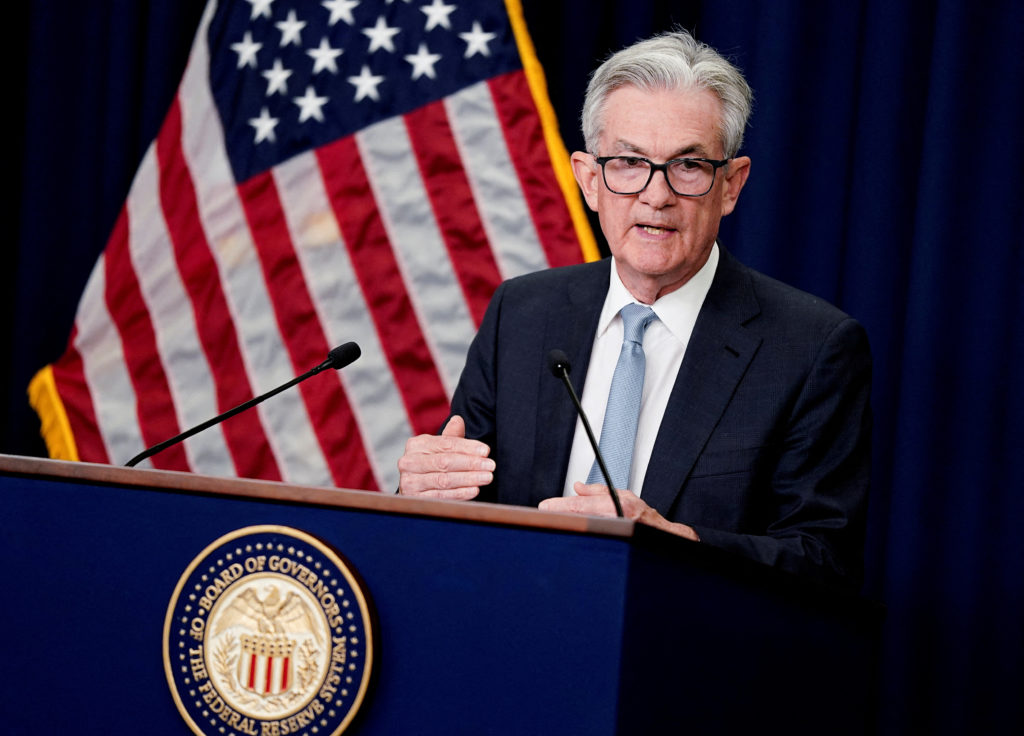Trending Stocks Ticker by Stock Target Advisor
US Exceptionalism Thwarts Dollar Bears, but Fed Test Looms
The US dollar, often seen as a global benchmark, has been experiencing a resurgence in strength, defying bearish sentiments. The resilience of the US economy has breathed life back into the greenback, leaving bearish investors grappling with unexpected challenges. However, this newfound vigor in the dollar may face a stern test in the coming weeks, as a barrage of economic data and the Federal Reserve’s meeting later this month loom on the horizon.
Resilient U.S. Growth
One of the primary factors behind the dollar’s recent rebound has been the exceptional resilience of the US economy. Despite global challenges such as the COVID-19 pandemic, supply chain disruptions, and inflationary pressures, the United States has managed to maintain strong economic growth. Robust job creation, a rebound in consumer spending, and a booming housing market have all contributed to this economic vitality.
Investors have sought refuge in the US dollar due to the relative stability and growth prospects offered by the United States compared to other regions facing greater uncertainty. This has translated into increased demand for the greenback, driving up its value in foreign exchange markets.
Bearish Investors on the Defensive
Bearish investors, who had been betting on a weaker dollar, have found themselves on the defensive as the currency has gained ground. Factors that previously weighed on the dollar, such as concerns about the Federal Reserve’s monetary policy and trade tensions, have taken a back seat in the face of resilient economic data.
The rally in the dollar has left bearish speculators rushing to cover their positions, contributing to further upward pressure on the currency. The unexpected strength of the dollar has illustrated the challenges of betting against a currency tied to a robust economy and backed by the world’s largest financial markets.
The Federal Reserve’s Meeting Looms
While the dollar’s resurgence has caught many by surprise, it faces a critical test in the form of the Federal Reserve’s upcoming meeting. The central bank has been closely watched for signs of its future monetary policy direction. Any indication of a shift toward a more hawkish stance, such as tapering of asset purchases or raising interest rates, could have a significant impact on the dollar’s trajectory.
Market participants will closely scrutinize the Fed’s commentary for clues about the timing and pace of potential policy adjustments. A more aggressive approach to tightening monetary policy could lend further support to the dollar, while a more dovish stance might exert downward pressure.
US Outlook
The recent resurgence of the US dollar has defied bearish sentiments, with the currency benefitting from the resilience of the US economy. Investors seeking safe-haven assets have flocked to the dollar, driving up its value. However, the dollar’s rally will face a critical test in the coming weeks as the Federal Reserve’s meeting approaches.
The central bank’s monetary policy decisions and forward guidance will be instrumental in determining the dollar’s future path. Whether the dollar’s strength continues or faces a setback will depend on the Fed’s assessment of the economic landscape and its policy intentions. As such, market participants are poised to closely monitor the Fed’s actions and statements, as they may hold the key to the dollar’s fate in the months ahead.
Effects of a US Bearish Dollar on Stocks
A bearish US dollar can have several effects on stocks, both in the United States and globally. It’s essential to note that the relationship between the US dollar and stock markets is complex and influenced by various factors. Here are some potential impacts of a bearish US dollar on stocks:
- Export-Oriented Companies Benefit: A weakening US dollar can benefit US-based multinational corporations that derive a significant portion of their revenue from overseas markets. When the US dollar falls in value relative to other currencies, it makes American goods and services more affordable for foreign consumers. This can boost the earnings of US companies that export their products, leading to higher stock prices for these firms.
- Commodity Prices May Rise: Many commodities, such as oil, gold, and agricultural products, are priced in US dollars globally. A weaker US dollar can lead to higher commodity prices as it takes more dollars to purchase the same quantity of commodities. Companies in the energy, mining, and agriculture sectors may see improved profitability and stock price gains when commodity prices rise.
- Inflation Concerns: A bearish US dollar can contribute to inflationary pressures as imported goods become more expensive. This can lead to concerns about rising inflation, which may affect investor sentiment. Central banks, including the Federal Reserve, may respond to inflation by tightening monetary policy, which can have mixed effects on stock markets.
- Interest Rates and Fed Policy: A weakening US dollar may influence the Federal Reserve’s policy decisions. If the Fed becomes concerned about inflationary pressures resulting from a falling dollar, it may raise interest rates to curb inflation. Higher interest rates can lead to increased borrowing costs for businesses and consumers, potentially impacting corporate profitability and stock valuations.
- Global Economic Dynamics: A weaker US dollar can impact global trade balances and relations. It may lead to trade imbalances as US imports become more expensive and exports more competitive. Trade tensions can affect investor confidence and contribute to market volatility.
- Hedging and Diversification: Investors may respond to a bearish US dollar by diversifying their portfolios or using currency hedges. Some may choose to invest in foreign stocks or assets denominated in stronger currencies to mitigate the impact of a weakening dollar. This can influence capital flows and asset allocation decisions.
- Market Sentiment: Investor sentiment and perceptions of currency movements can play a role in stock market behavior. If a bearish US dollar is seen as a sign of economic weakness or instability, it may negatively affect market sentiment and lead to increased market volatility.
In summary, the impact of a bearish US dollar on stocks is multifaceted and depends on various factors, including the broader economic environment, central bank policies, and global trade dynamics. Investors should consider these factors and the potential consequences of a weakening dollar when making investment decisions. Diversification and a well-thought-out investment strategy can help mitigate risks associated with currency fluctuations.



























